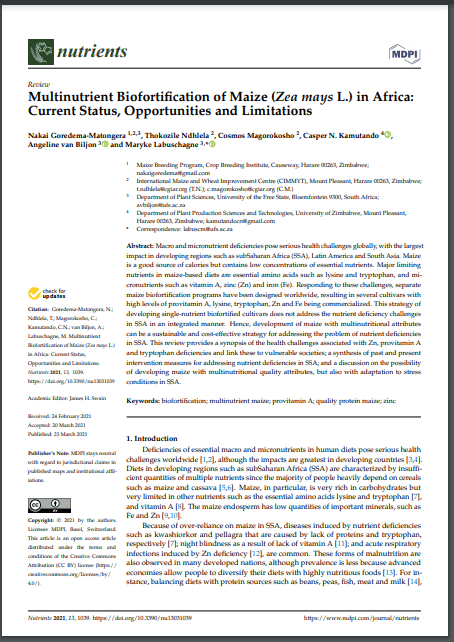Macro and micronutrient deficiencies pose serious health challenges globally, with the largest impact in developing regions such as subSaharan Africa (SSA), Latin America and South Asia. Maize is a good source of calories but contains low concentrations of essential nutrients. Major limiting nutrients in maize‐based diets are essential amino acids such as lysine and tryptophan, and micronutrients such as vitamin A, zinc (Zn) and iron (Fe). Responding to these challenges, separate maize biofortification programs have been designed worldwide, resulting in several cultivars with high levels of provitamin A, lysine, tryptophan, Zn and Fe being commercialized. This strategy of developing single‐nutrient biofortified cultivars does not address the nutrient deficiency challenges in SSA in an integrated manner. Hence, development of maize with multinutritional attributes can be a sustainable and cost‐effective strategy for addressing the problem of nutrient deficiencies in SSA. This review provides a synopsis of the health challenges associated with Zn, provitamin A and tryptophan deficiencies and link these to vulnerable societies; a synthesis of past and present intervention measures for addressing nutrient deficiencies in SSA; and a discussion on the possibility of developing maize with multinutritional quality attributes, but also with adaptation to stress conditions in SSA.

